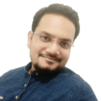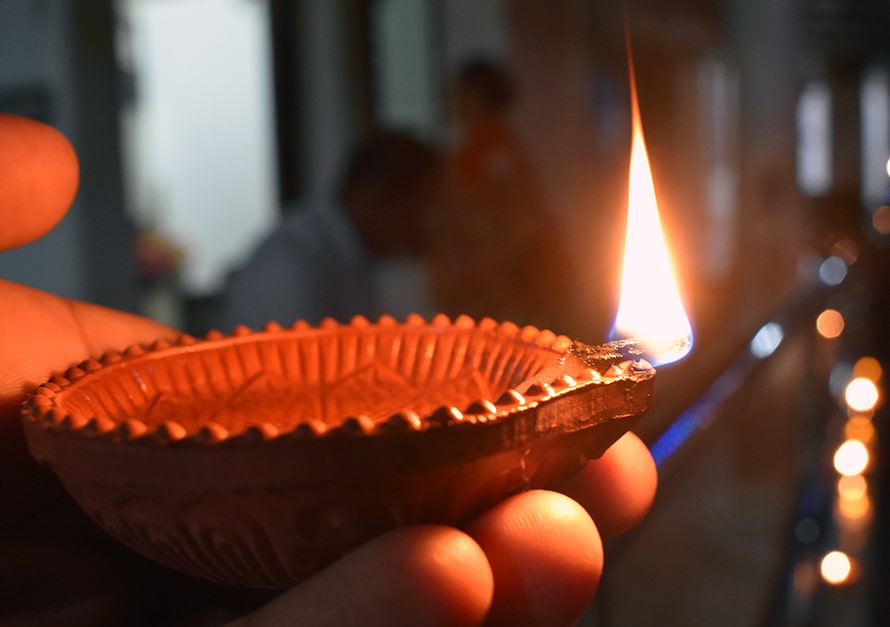What is the Meaning of Diwali?
The Indian word Diwali is derived from the Sanskrit, ‘Deepa’ which means ‘clay lamps’ and ‘avali’ meaning ‘row’. Known as the Festival of Lights, this important event is celebrated during Kartika. In the Hindu Lunisolar calendar, Kartika is a month that typically extends over October and November. This is the time when Hindus celebrate the spiritual triumph of the forces of lights over the forces of darkness, of good over evil, and of knowledge over ignorance. At this time, you will see ‘diyas’ or small oil lamps being adorned in homes, shops, and even in public places.
In India, the Diwali celebration starts in autumn just before the monsoon wind begins to blow and usually lasts for five days. Commonly, this festival is celebrated in honor of the goddess of wealth, Lakshmi. Though regional traditions vary all throughout India, it is still of the same symbolic victory that is commemorated and celebrated. Diwali to Hindus is as important as Christmas to Christians and the colorful displays during this occasion are comparable to the Christmas lights in western cities.
Story Behind Diwali
The Diwali story began when Ravana, the demon king who had twenty arms and ten heads abducted Sita. Upon his discovery, the great warrior Prince Rama set out to find his wife. Sita left a trail of her glittering jewelry that Rama followed until he met and befriended the monkey king, Hanuman. Together they searched for Sita with the help of all the monkeys and all the bears in all the land. Finally, Hanuman found Sita held captive on an island.
Rama and the army of monkeys and bears could not reach the island. So, they started to build a bridge. When the other animals saw them, they all came to help. All animals large and small offered their help to Rama. After the bridge was built, all the animals of the world swiftly crossed the bridge and fought an immense battle. The evil Ravana was killed by Rama using a magic arrow and the whole world triumphed. When Rama and Sita set out to return to their land, oil lamps were lighted to guide them on their long journey. And that is why lamps are lighted every Diwali for it is in commemoration of the victory of lights over darkness. It to celebrate the victory of good over evil.
Learn The Facts about Diwali
The Diwali festival does not have a fixed date on the regular calendar. Each year, the festival date is being calculated using the Hindu lunar calendar. Other religions also celebrate Diwali but Hinduism is the major religion that celebrates this Festival of Lights. Hinduism is considered to be the oldest religion in the world. That being said, it can also connote that Diwali is the oldest festival being celebrated. In the present, there are over 800 million people who celebrate this festival each year and in various ways.
Lakshmi, the Hindu goddess of wealth and prosperity is being honored in this festival. It is also in celebration of Lord Rama’s return after fourteen years in exile. Comparable to Boxing Day and Black Friday, Diwali also marks the start of major shopping festivals in the areas where it is commemorated. Businesses provide special discounts and offer to their customers. It is a tradition to purchase new things especially clothes and golds during this festival. Any spending or investment during Diwali is considered good luck that ascertains success. The D-Day or Diwali Day is marked as a national holiday in many countries such as India, Fiji, Trinidad & Tobago, Sri Lanka, Myanmar, Malaysia, Nepal, Suriname, Mauritius, Singapore, and Guyana. Part of the tradition is to clean the house and make it absolutely pure before the New Year.
Who Celebrates Diwali?
Diwali for the most part is a Hindu festival. The top three countries that have the highest Hindu population are India, Nepal, and Bangladesh. In India, 79.8% of the population are Hindus which totals 966 million people according to the 2011 records of the National Census of India. Nepal has 24.17 million Hindus which comprises 75% of the country’s population. Bangladesh has 12.5 million Hindus celebrating Diwali every year.
The religious significance of Diwali varies depending on region and religion. In Hinduism, it is a celebration of Lord Rama’s return to his kingdom in Ayodhya after a 14-year exile and his victory over the devil king, Ravana. In Sikhism, it is celebrated in honor of the sixth Guru, Har Gobind Ji (1595-1644). Sikhs commemorate his return together with 53 other Hindu kings after being held captive at Fort Gwalior by Jahangir. Jains, celebrate Diwali for it marks the anniversary of Nirvana. In Jainism, Diwali is commonly known as Dipalika or the Festival of Lamps.
Diwali Traditions
The Hindu Festival of Lights is usually celebrated for five days. To mark the start of Diwali, Hindus would buy precious gold or silver to attract good luck in the coming year. Lamps are lighted and left burning on doorsteps for the whole night in order to light Lakshmi Puja’s path. It is believed that if she pays your home a visit, she will bless your household with prosperity for the following year. Just before dawn, flower vendors would work to create garlands of fragrant jasmine that Hindus use to decorate their homes. By dawn, these garlands will be sold out and the reason why people would purchase them first before heading to the temple.
Doorways are poured with colored sand on the ground taking the shape of a lotus blossom which is a symbol of welcome. It is also a common tradition to knock at your neighbor’s doorstep to share a plate of sweet delicious treats. This symbolic gesture is done to wish them a prosperous year ahead. When heading to the temple, Hindus would dress in beautiful new clothes made of fine Indian silks purchased specially to celebrate the Festival of Lights. In the bigger cities of India, spectacular firework displays are enjoyed.
Diwali & Food!
Like all other celebrations, food is a very important part of Diwali. In Hinduism, it is believed that food is a gift from God and thus has to be treated with respect. Generally, Diwali is associated with sweets and fried snacks. Eating meat is not restricted but it’s also not encouraged during Diwali. Meat is considered tamasic food. Hindus believe that meat promotes ignorance, laziness, and doubt. Eating meat will also develop animal qualities in people.
The celebration of Diwali varies depending on the region. Some Hindus do eat meat during the Festival of Light but others prefer not to in order to encourage a positive spiritual mind. This is the festival where people can enjoy guilt-free sweets. You will drool over the variety of sweets that are served on just one platter during Diwali. Anarsa – Maharashtra is a deep-fried sweet fritter with seeds popping all over it. This sweet and savory snack is an important part of the Diwali celebration. Also enjoyed is the Babroo – Himachal Pradesh. Commonly known as ‘treat from the land of Gods’, it is so irresistible that you can not help but to fall in love with it once tasted. Narikol Laru – Assam is made of shredded coconut and it is one of the most popular for it is delightfully good. Clearly, the plethora of food that you will find in a Diwali platter is the most flavorful in the world.

